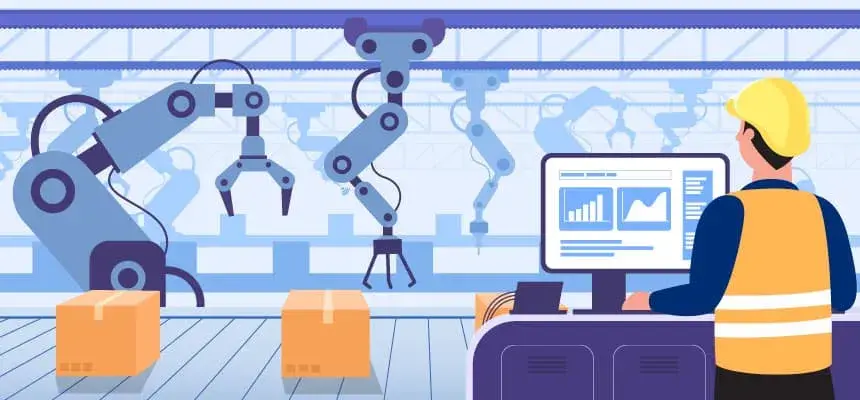What is Computer Aided Manufacturing?
Computer Aided Manufacturing (CAM) is a manufacturing process method that uses software on computers and equipment that can be operated automatically to produce goods with high accuracy and precision. Thanks to modern machinery and software, we can now build better parts with more control over the entire process.
CAM, or computer-aided manufacturing, is the process of producing precise instructions (G-code) that operate “Computer Numerical Control” (CNC) machines to produce parts. Manufacturers across many sectors rely on CAM to generate high-quality products.
How Does CAM Help Business Operations?
CAM assists manufacturers with product planning, development, management, storage, and logistics.
The main goal of CAM is to either develop new industrial setups or enhance existing ones to increase productivity and decrease waste. It accomplishes this by accelerating tooling and manufacturing processes and lowering energy demands. The end outcomes are highly accurate, consistent, and of excellent quality.
As an SME, you must squeeze the most value out of the least amount of raw materials. Otherwise, it will have an impact on your profit. In the beginning, this will significantly help maintain a good profit margin and a high-quality standard, which is critical in building a good reputation for your company.
CAM Usage Among SMEs in Australia
SMEs are by far the largest employer in Australia. They contribute more than half of Australia’s GDP and account for 99.8% of all Australian businesses. They are manufacturers, food producers, and healthcare providers.
As we discovered, most SMEs do not use CAM in their manufacturing. As a result, the majority of SMEs remain SMEs. The wings have reduced the ability to spread.
Advantages of CAM
- Quick and precise.
- Decreases waste.
- Lower labour costs.
- Increased manufacturing control.
CAD vs CAM? What is the Difference?
Computer Aided Designing (CAD) concerns a product’s designing and drafting aspects. In contrast, CAM is concerned with the manufacturing aspect. The CAD-created engineering design is translated into machine language (typically G-codes and M-codes) and fed into CNC-powered machines. Following the code, the device instructs machine tools to perform the necessary machining.
CAD/CAM tools comprise various components, and computers and CAD software are the primary CAD tools. A graphic artist, technician, or designer can successfully make a drawing with the help of a computer and CAD software. This illustration can then be seen from an orthographic or isometric perspective. The readability of the drawing can be enhanced through a variety of actions.
A computer, a CAM software package, and a CAM machine are all examples of CAM tools.
How to Implement the CAM Process Successfully?
 https://www.freepik.com/free-vector/_7416545.htm
https://www.freepik.com/free-vector/_7416545.htm
-
Designing Process
The models are made by the designer using CAD software. The output’s functionality, manufacturability, and aesthetics are the primary considerations. A 2D or 3D design is produced by the designer using CAD software, and these designs are referred to as CAD models.
-
Coordinate Creation
The designer converts the model into coordinates at this stage. We can leverage the software’s coordinate transformation functionality by assigning the coordinates to our source models.
-
Simulation
The designer runs a production simulation to determine the model’s viability in relation to the setup’s manufacturing capabilities and to acquire a comprehensive image of the finished manufacturing configuration.
-
Coding
The CAD program exports the finished model and the design data to the CAM software. Following the completion of the import, the software begins writing the CNC machining code.
-
Production
Many tasks that must be carried out in a specific order are involved in the setup and operation of a CNC machine. The machinists must carry out processes including pre-start, tool loading, CNC program loading, dry run, and program run.
-
Quality Control
Before proceeding to the next station on the assembly line, the finished product must pass quality inspections. After quality checking, parts are assembled, and varnishes/finishes are applied before they are dispatched to the client/consumer.
Outline
The arrival of computer-aided design (CAD) and computer-aided manufacturing (CAM) in the 1990s significantly changed how we approach manufacturing today. CAD and CAM jobs were traditionally limited to high-end automotive and aerospace applications. But now it has changed.
CAM involves more than just managing equipment on a factory floor. It combines software, hardware, procedures, and human resources to create outstanding components. We encourage you to work with Sanmarkif this is your first entry point into the realm of CAM.
Feature image source: https://www.freepik.com/free-vector/_14244751.htm
